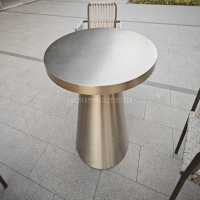Welcome to the website for landscape facilities products and knowledge.
How does the table’s design minimize the risk of tipping or instability?
Modern table design incorporates multiple engineering principles to minimize tipping risks and ensure stability. The foundation of this safety begins with strategically weighted bases that create a low center of gravity, making tables inherently more stable. Designers carefully calculate the distribution of weight, often placing heavier materials in the base rather than the tabletop to prevent top-heavy configurations.
The geometry of table legs plays a crucial role in stability. Rather than simple vertical placement, many contemporary designs feature legs that angle outward or incorporate widened footprints, creating a broader support base. This increased surface area contact with the floor significantly reduces the likelihood of tipping, even when weight is applied to table edges. Some designs incorporate flared legs or additional cross-bracing between legs for enhanced structural integrity.
Material selection contributes substantially to anti-tip performance. Manufacturers often use dense materials like solid wood, metal, or stone for base components, while selecting lighter materials for tops. This strategic material pairing maintains functionality without compromising stability. Additionally, many tables feature rubberized foot pads or non-slip coatings that increase friction with flooring surfaces, preventing accidental sliding that could lead to tipping.
Advanced designs incorporate specific anti-tip mechanisms, such as hidden counterweights, stabilizing bars, or retractable extensions that lock into place. For glass-topped tables, tempered safety glass combined with robust framing provides both visual appeal and structural security. The integration of these features demonstrates how furniture design has evolved beyond mere aesthetics to prioritize user safety through engineering excellence.
Quality testing protocols ensure these design elements perform as intended. Manufacturers conduct rigorous stability tests, applying pressure to table edges and simulating real-world usage scenarios. This comprehensive approach to table design—combining weight distribution, geometric planning, material science, and specialized safety features—creates furniture that remains reliably stable throughout years of daily use, protecting both users and their belongings from accidental tip-overs.
Related search:

Recommendation
Outdoor Metal Table - Classic Outdoor Furniture, Stainless Steel Table, Durable and Reliable